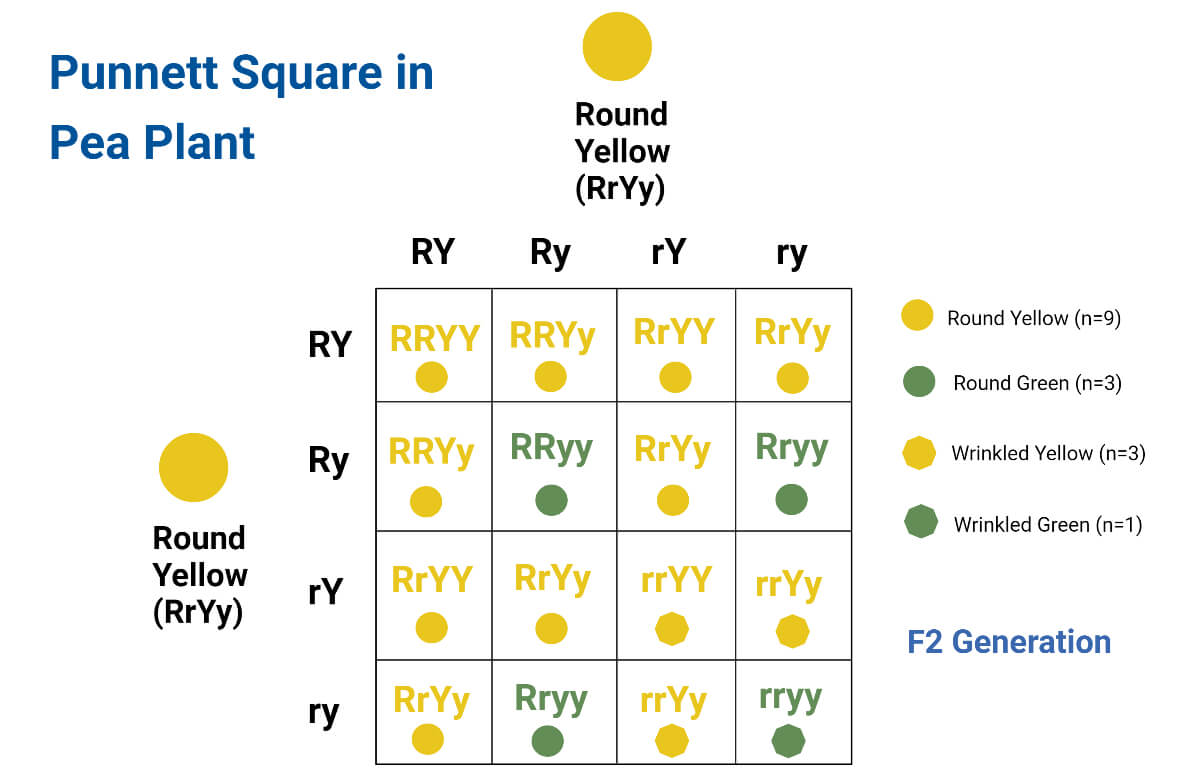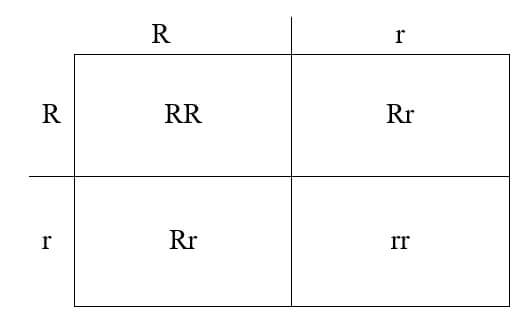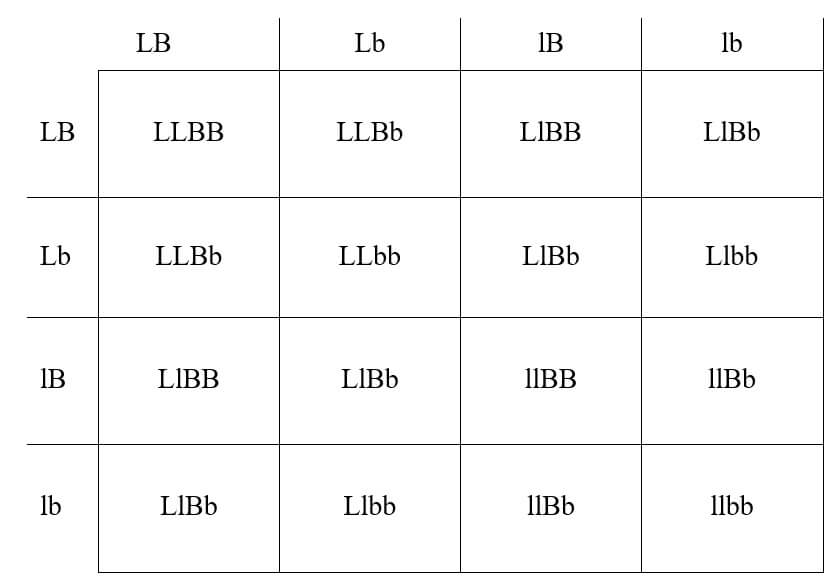Interesting Science Videos
Punnett Square Definition
The Punnett square is a table or checkboard grid that is used to determine all possible genotypes from a particular cross.
- Punnett square is a simple square divided into four quadrants which consist of all the possible genotypes of haploid male and female gametes.
- In order to prepare a Punnett square, it is necessary to know the genetic composition and genotypes of the parents.
- Punnett square is based on the assumption that each genetic trait is based on a single gene locus. It is based on the principle of independent assortment.
- Punnett square was developed much after Mendel’s experiments and is currently used to explain the studies performed by Mendel.
- The concept was introduced by Reginald C. Punnett in 1905 that was eventually used as a visual representation of Mendelian inheritance.
- These have been used continuously in order to predict the ratios of various traits and their underlying genetic composition.
- Within the Punnett square, the genotypes of the gametes of one sex are entered across the top and those of the other down the side. The zygote genotypes obtained after crossing are then entered in the appropriate squares on the grid.
- Each square within the tables contains the diploid genotype resulting from the cross of the male gamete for that row with the female gamete for the column.

Types of Punnett Square
- There are two types of Punnett square that are commonly used in biology and genetics.
- The first type of square is the 2×2 square composed of four boxes. This type of square is used for a monohybrid cross.
- In a monohybrid cross, a single genetic trait or character is studied by crossing two homozygous dominant and recessive parents for the said character.
- The second type of Punnett square is the 4×4 square with 16 boxes. This is the larger box that deals with more than one character.
- The larger Punnett square is used for dihybrid crosses where each of the parents produces four types of gametes depending on the distribution of the alleles of the genes.
Application of Punnett Square
- The most important application of the Punnett square is to predict the genotypes of the offspring obtained from different crosses.
- Besides, the tool is also helpful in determining the phenotypic and genotypic ratios of the offspring.
- Over the years, with the advancement in the field of genetics, Punnett squares have found use in maternity clinics.
- These are used by the genetic counselor to help couples make a decision about having children. This is especially useful in cases where the parents are carriers of an autosomal recessive disease.
- Punnett squares are also used to determine the most effective cross in order to produce pets like dogs and cats with desired traits.
Examples of Punnett Square
Seed form in Pea plant
- The cross between the wrinkled and round seeds in pea plants is an example of a monohybrid cross which can be displayed in a Punnett square.
- The cross was famously performed by Mendel during his study on pea plants.
- The Punnett square for this cross begins with the representation of the genotype by alleles. The dominant round form is represented by the capital letter R, whereas the recessive wrinkled form is represented by the lower case letter r.
- Each of the alleles is segregated independently to form gametes which are then added to the 2×2 table.

- Each of the boxes in the grid represents the possible genotypes of the offspring obtained from the cross.
- The result of the cross is observed in the form of three heterozygous round seeds and a single wrinkled seed. But the genotype ratio remains 1:2:1 with one homozygous round, two heterozygous rounds, and one homozygous wrinkled seed.
Dihybrid cross in Drosophila
- An example of a 4×4 Punnett square can be observed in the dihybrid cross between the long-winged and black-bodied Drosophila and a vestigial-winged, grey-bodied Drosophila.
- The cross produces 9 long-winged grey-bodied, 3 long-winged black-bodied, 3 vestigial-winged grey-bodied, and one vestigial-winged black-bodied Drosophila.
- The Punnett square for the cross can be observed as below:

Limitations of Punnett Square
- Even though Punetts square has been used as a tool to understand Mendelian genetics, it cannot be used in the cases of complex genetic inheritance.
- These cannot accurately determine the distribution of genotypes and phenotypes in the case of linkages.
- Punnett square is also not useful in studying straits that are determined by multiple genes by varying degrees.
- The tool is also of no help in the case of genes that are present in the mitochondria or the Y-chromosome and are entirely inherited.
References and Sources
- Verma PS and Agarwal VK (3005). Cell Biology, Genetics, Molecular Biology, Evolution and Ecology. Multicolored Edition.
- J. Phelan. Punnett Square. Brenner’s Encyclopedia of Genetics (Second Edition). Academic Press. 2013. Page 532. https://doi.org/10.1016/B978-0-12-374984-0.01242-0.
- Biologydictionary.net Editors. “Punnett Square.” Biology Dictionary, Biologydictionary.net, 06 Nov. 2016, https://biologydictionary.net/punnett-square/.
- https://doviechannel.blogspot.com/2021/03/what-is-punnett-square-and-why-is-it.html – 12%
- https://www.sciencedirect.com/topics/biochemistry-genetics-and-molecular-biology/punnett-square – 11%
- https://en.wikipedia.org/wiki/Punnett_square – 2%
- https://www.thoughtco.com/homozygous-a-genetics-definition-373470 – 1%
